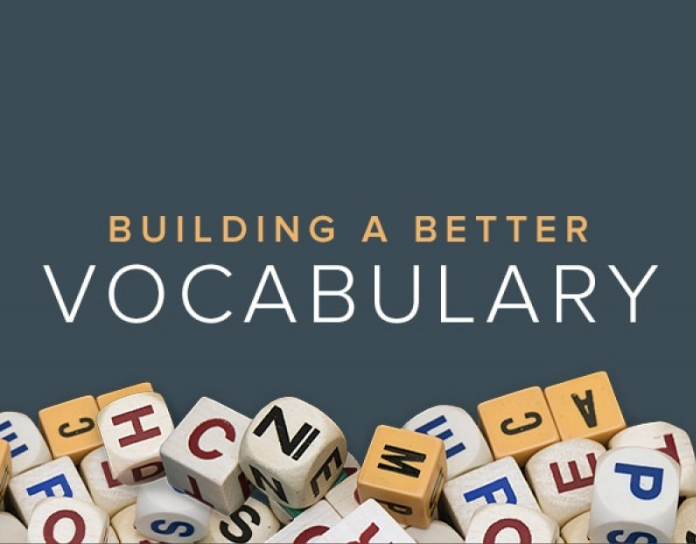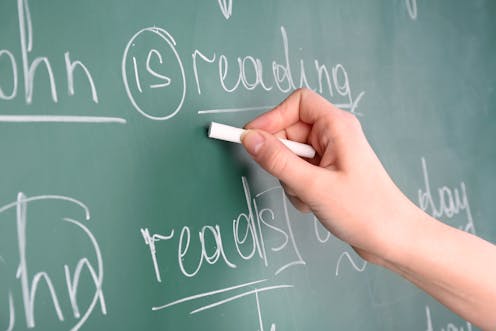Teaching Vocabulary and grammar
Hi, readers!
How’s life?
I hope all of you feel good and happy.
Today we will talk about Teaching Vocabulary and grammar.

Vocabulary
Vocabulary skills are essential to building a student’s confidence in reading and writing, and the right activities can help get students excited about language learning. And there are some tips teaching vocabulary for young learners.
Using Visuals
When teachers hear ‘vocabulary’, they should pair it with the word ‘visual’. According to Inc.com, 65% of people are visual learners. We should take that into account no matter who we teach, but as teachers of English learners, we should plan to incorporate visual aids in our teaching of vocabulary whenever possible. On top of that, if we are teaching early readers or even pre-readers, visual vocabulary is a must!
Vocabulary A-Z Lesson Plans
With Vocabulary A-Z, you can create your own vocabulary lists based on topic, content, or part of speech, and generate lesson activities based on your selections. No matter what kind of vocabulary list you choose, your list generates a 5-day lesson plan with activities that encourage students to:
Draw a picture
Make a picture dictionary
Make a sentence
Match a word
Mime it
Pick a synonym or antonym
Story Telling
After you have created a vocabulary word list and reviewed definitions with your students, ask them to write a short story that correctly uses each word in context and definition. Students can illustrate their stories and share them with the class while explaining how the words work in their stories.
Acting Out Verbs
Teaching verbs and adjectives with a picture can be ambiguous. If you show a picture of a girl in a red shirt running to teach the verb ‘run’, students may get confused and forever associate ‘girl’ with ‘run’ or ‘red’ with ‘run’! Ideally, teachers will act out the vocabulary words which are verbs and/or show several videos of the verb in action. Once the students understand that the teacher is demonstrating an action, the students can practice conjugating the verbs in various sentences during the study phase. The activate phase could include a bag filled with cards with verbs on them. Students could reach into the bag and choose to either draw or mime the verb to his/her classmates as a game of Pictionary or charades.
Grammar
Grammar teaching is an essential aspect of education. Without proper grammar, writing, reading, and speaking all lose meaning and value. Grammar is an important subject for teachers to impart to their students. Unfortunately, it is also one of the most boring subjects in the eyes of many students, and typically teachers do not enjoy endless grammar drills either. Educators, therefore, are looking for ways to make grammar teaching more fun and engaging. When students are able to enjoy the lessons, they are more likely to pay attention. Here are five lesson ideas to help get them started. There are some tips in teaching grammar for young learners.
Get Visual
Sometimes visual aids are necessary for helping your elementary students grasp something as conceptual as grammar in concrete terms.
Educational videos can be a great way to grab younger students’ attention and help them see how different parts of speech and rules of punctuation work together to create meaningful sentences. (And yes, believe it or not, Schoolhouse Rock is still a thing!)
Graphic organizers, like this “Spice Up Your Writing” worksheet, can help students understand how different words are classified, as well as keeping them on task and on topic when formulating sentences and paragraphs of their own.
Posters and other classroom decorations, whether bought at an educational goods store or hand-drawn by your students, help remind them of basic rules and provide a quick and easy guide to refer to when practicing writing.
Get Playful
Grammar is surprisingly easy to turn into a game—and doing so makes it so much simpler to both teach and learn! To gamify your elementary students’ next grammar lesson, try one of the following:
Grammatical Go Fish.
Go Fish vocabulary cards are widely available for purchase, but it’s also a breeze (not to mention inexpensive) to have your students make their own using index cards and markers. Instead of asking for threes or aces, they’ll be fishing for parts of speech.
Fill-in-the-Blanks.
Create your own Mad Libs-inspired word game by asking your students to create framed sentences with only certain types of words missing—adjectives, or perhaps adverbs ending in “ly”. Ask them to create a list on a separate piece of paper of just the types of words needed to fill in the blanks. Have them partner up and swap lists, filling in the blanks without seeing the original framed sentences. Finally, ask them to swap back and fill in the blanks with their partner’s words. Be sure to have them read these aloud at the end!
Pin the Punctuation on the Sentence.
A literary twist on Pin the Tail on the Donkey, there are no blindfolds involved in this version of the game. Instead, create (or buy) a few oversized punctuation marks and write a sentence on the board at the front of the classroom. Have your students draw the marks blindly from a hat or bag and see if they can pin it to the board in a spot that makes grammatical sense.
Get Creative
Working with examples is especially important when it comes to teaching grammar in elementary school. Seeing the rules of writing in action helps illustrate the purpose and importance of those rules. However, as tempting as it is to simply use cut-and-dried examples straight from a textbook or other basic resource, a far more engaging lesson plan will involve thinking a bit farther outside the box.
Try asking your students to bring in their favorite books to use as reference material. Ask them to copy a sentence, a paragraph or even a page from the book and identify different grammatical elements and how they affect the meaning of the text. Reading something they enjoy will motivate your students both to pay more attention and dig a little deeper when completing the assignment.
Alternatively, you can hand-pick a few clips from popular age-appropriate movies or TV shows to use as examples. Transcribing the dialogue might be a bit difficult for your students, so you can use these clips in other ways—for instance, asking your students to raise their hands whenever someone uses a pronoun, or pausing after each sentence to ask what sort of punctuation mark should go at the end of it.
To practice what they’ve learned in real-time, try having your students write a page-long short story. After completing the first draft, ask them to proofread each other’s work and revise it accordingly, making sure to check for grammar and punctuation.
I think that’s all for today. Thank you for visiting my blog.
See you!
Stay safe and stay healthy!
References:
https://www.learninga-z.com/site/breakroom/5-fun-ways-vocabularyaz
https://studentreasures.com/blog/3-best-strategies-for-teaching-grammar-in-elementary-school/
https://miro.medium.com/max/696/1*6OhSmKzdVhfbCOLw-ER6OQ.png
https://images.theconversation.com/files/353750/original/file-20200820-17-1z10hyj.jpg?ixlib=rb-1.1.0&q=45&auto=format&w=496&fit=clip
https://ganjil2019.aula.unair.ac.id/pluginfile.php/4935/course/overviewfiles/Grammar.png
https://d29xdxvhssor07.cloudfront.net/assets/schools/2270/courses/23520/Untitled_1_03_mwwy8q.png




Comments
Post a Comment